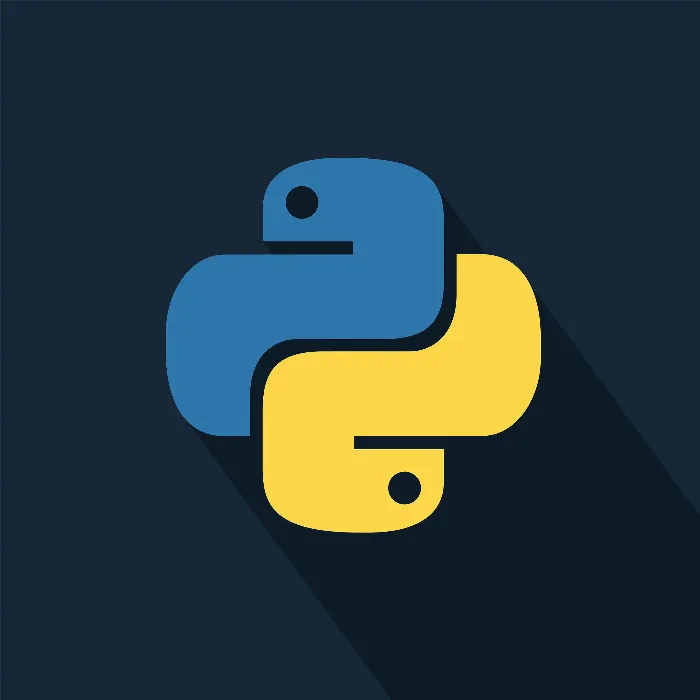You have certainly heard of loops in programming. Particularly for loops are a fundamental technique in many programming languages to efficiently handle repetitive processes. In this guide, we will delve into the for loop in Python. You will learn how for loops work, how to use them, and the possibilities they offer to make your code clearer and more effective.
Main insights
- For loops allow you to iterate over a list or other iterable objects.
- The modulo operator can be used to determine, for example, even or odd numbers.
- You can traverse various data types and structures with for loops, such as lists and tuples.
- By using conditions, for loops implement instructions based on certain criteria.
Step-by-step guide
1. The basics of for loops
To understand how for loops work in Python, we start by creating a list. You can fill this list with numbers that you want to iterate through, iteration by iteration.
To output all entries in the list, you use the for loop. It is initiated in Python with the keyword for, followed by a variable representing each element in the list, and the keyword in.
This loop outputs each entry in the list one after the other.

2. Using the modulo operator
If you want to output only certain elements, such as every second element, you can use the modulo operator. If you are not familiar with the modulo operator, here’s a brief explanation: The modulo operator (%) returns the remainder of a division.
In the above example, only the even numbers are output.
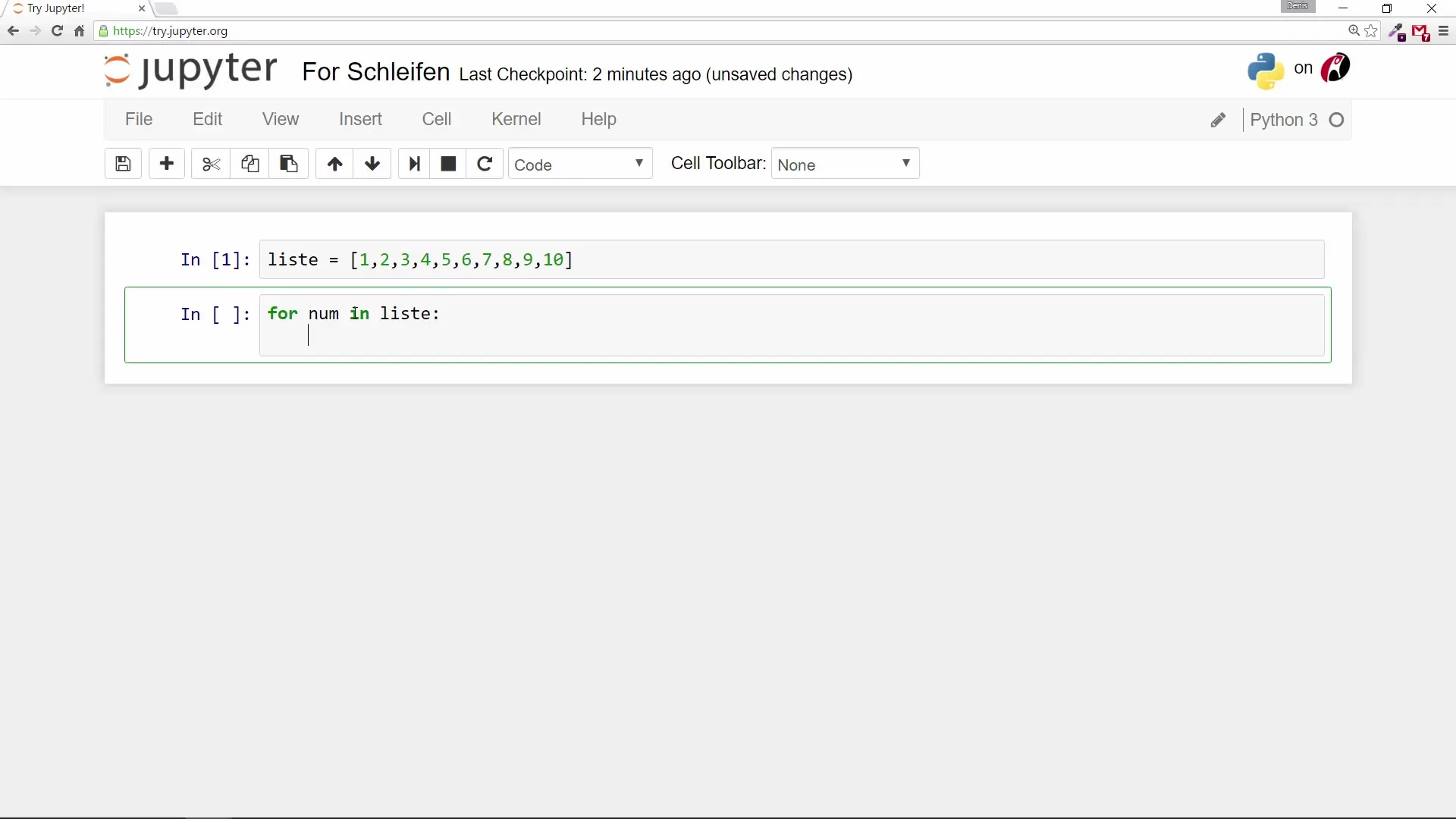
3. Conditional statements in the for loop
To determine if a number is even or odd, you can use an if statement in your for loop.
A message is output for each number in the list that indicates whether it is even or odd.
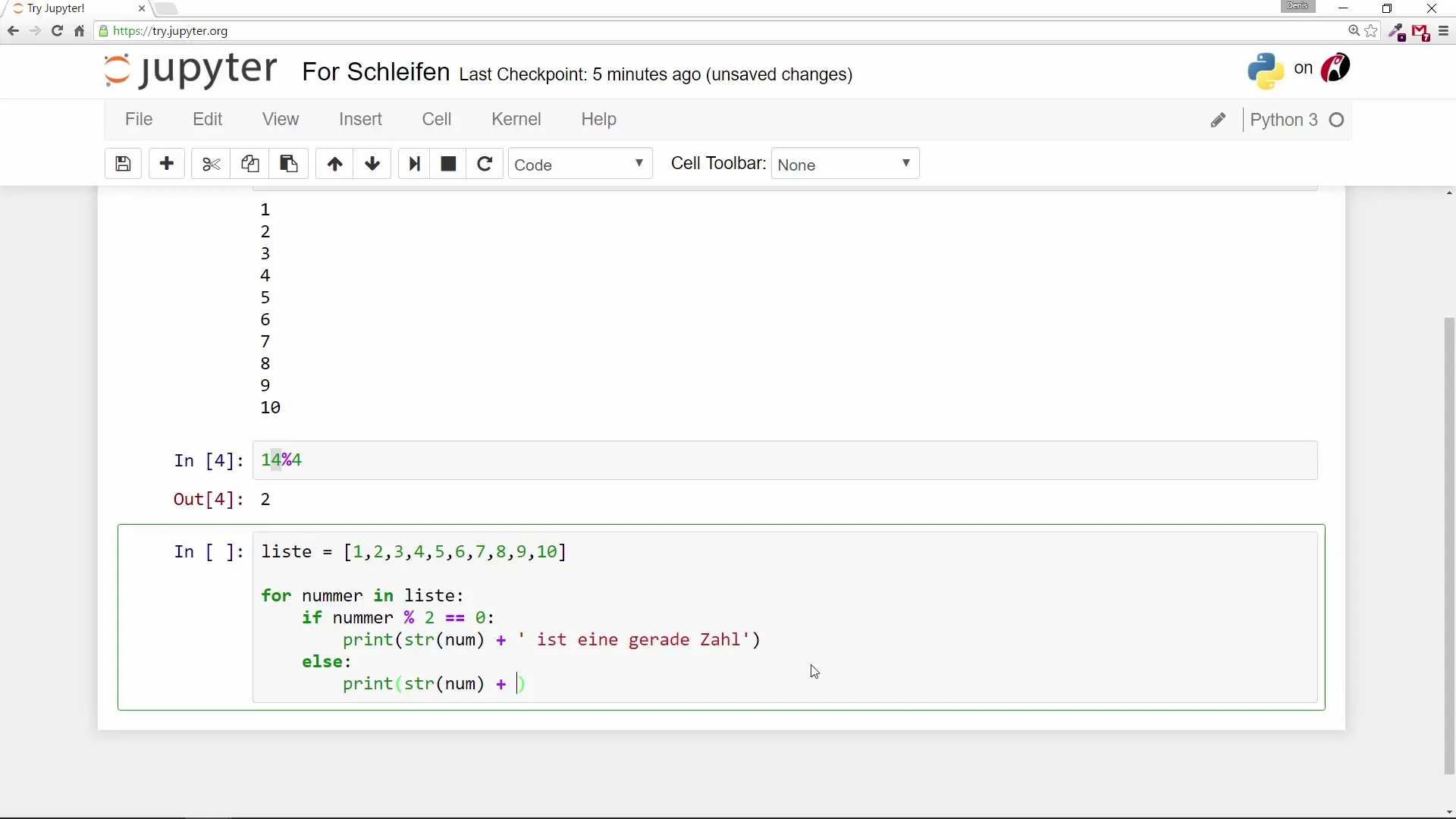
4. Using tuples in for loops
You can also use for loops to iterate through tuples. A tuple is an ordered collection, similar to a list, but immutable.
In this example, the tuples are output one after the other.

5. Accessing the individual values of a tuple
If you want to output the individual values of a tuple, you can also do this in a for loop.
This way, you get the values of the individual tuples.
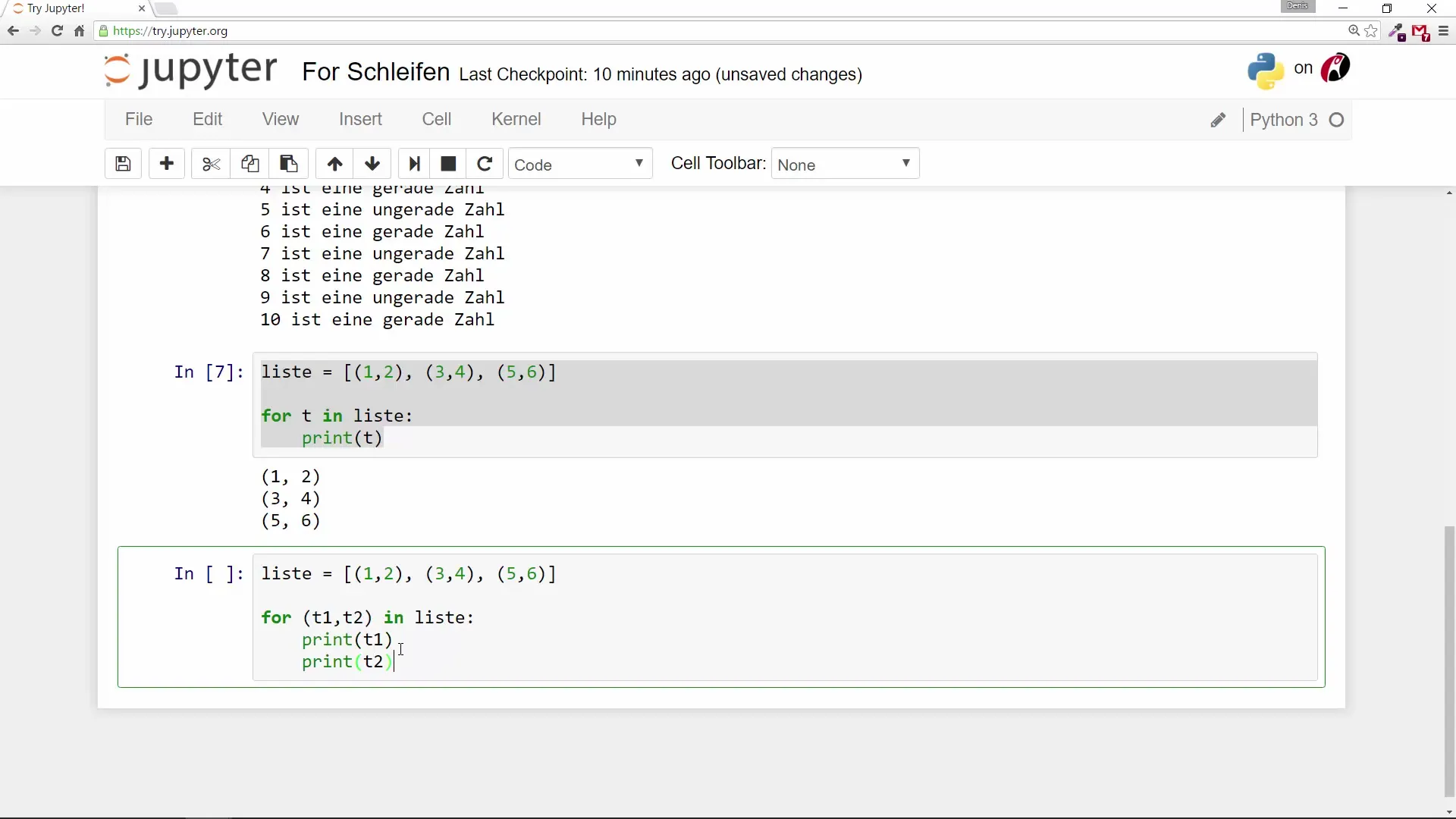
6. Multiple executions of a code
Another example for the for loop could be to execute a certain task multiple times.
This loop outputs "I love Python" ten times.
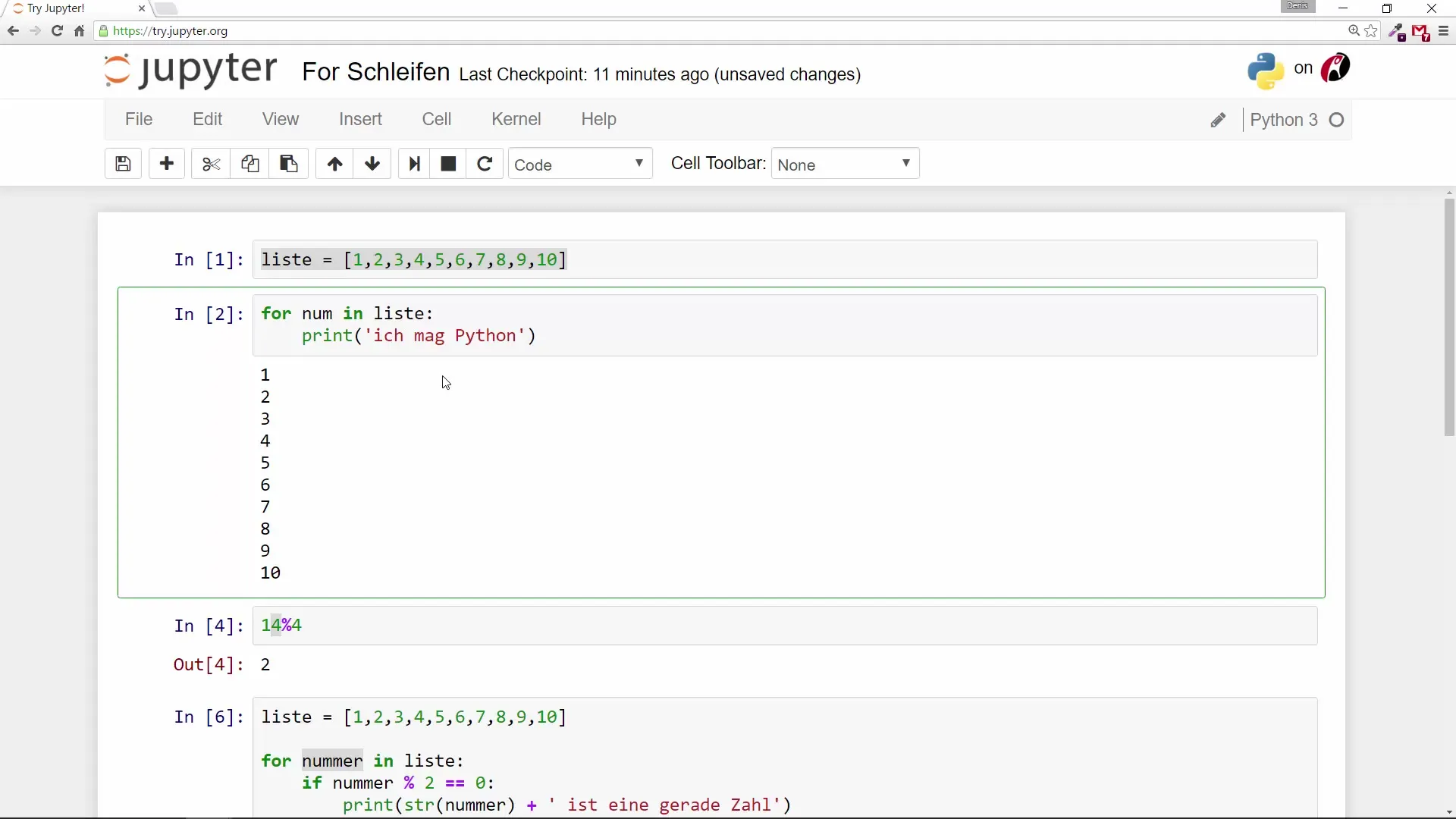
7. Important aspects of the syntax
It is important to understand the correct syntax when using for loops.
In this case, the current number is automatically set for each iteration.
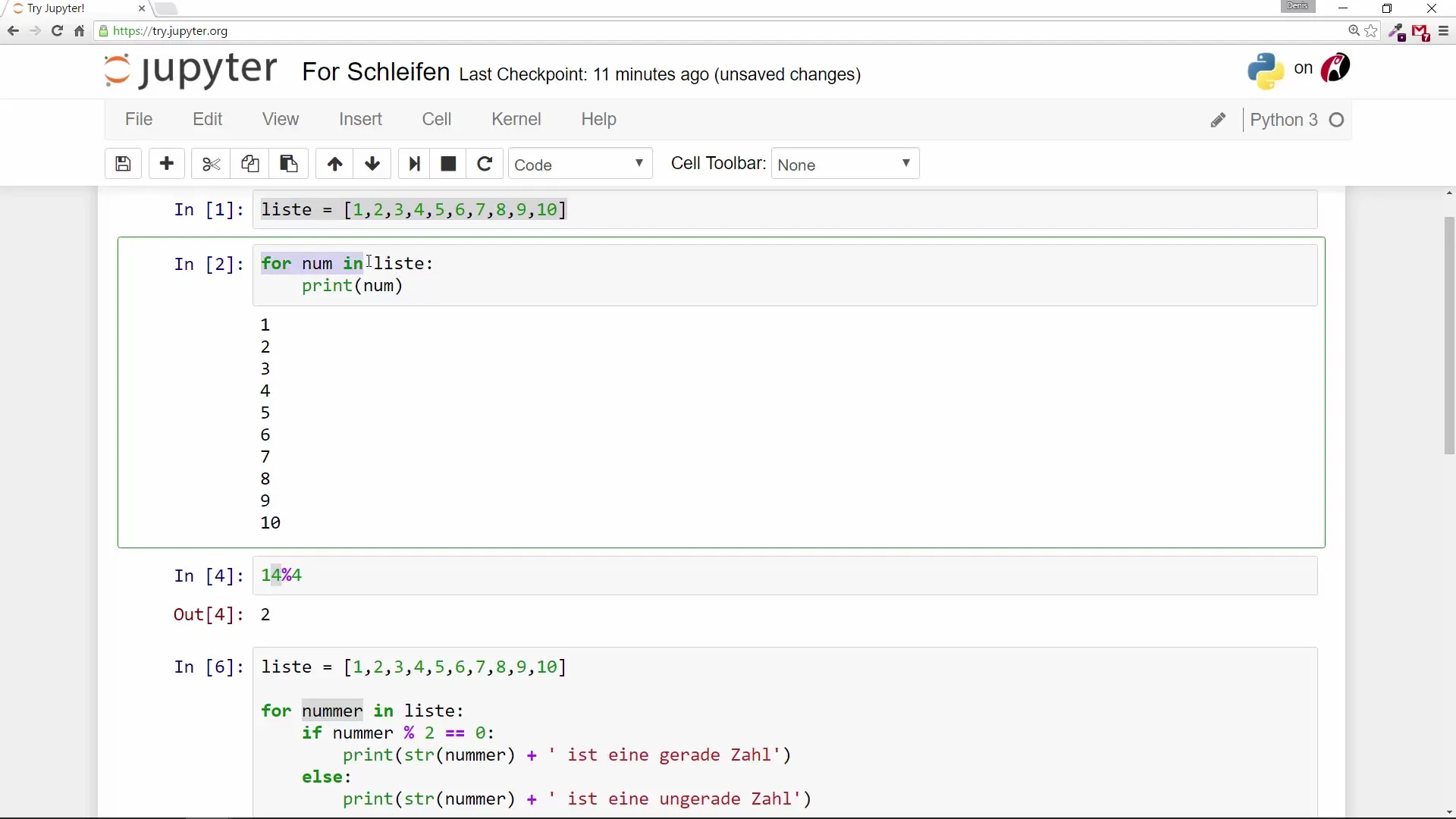
Summary – Python Programming for Beginners: Understanding and Using For Loops
For loops are an essential part of programming in Python. They allow you to iterate over lists, tuples, and other iterable objects. Whether you want to output all numbers in a list or determine specific values, using for loops not only makes your code clearer but also saves you a lot of time and effort.
Frequently Asked Questions
What is a for loop?A for loop is a structure in Python to iterate over a collection of values.
How does the modulo operator work?The modulo operator (%) returns the remainder of a division and is often used to check if a number is even or odd.
Can I also iterate through tuples with for loops?Yes, for loops in Python can also be used to iterate through tuples and other iterable data types.
What happens if I use range() in a for loop?With range(), you can specify a range of numbers to iterate over.
Can I use conditions in a for loop?Yes, you can use if statements in a for loop to set specific conditions for iteration.
